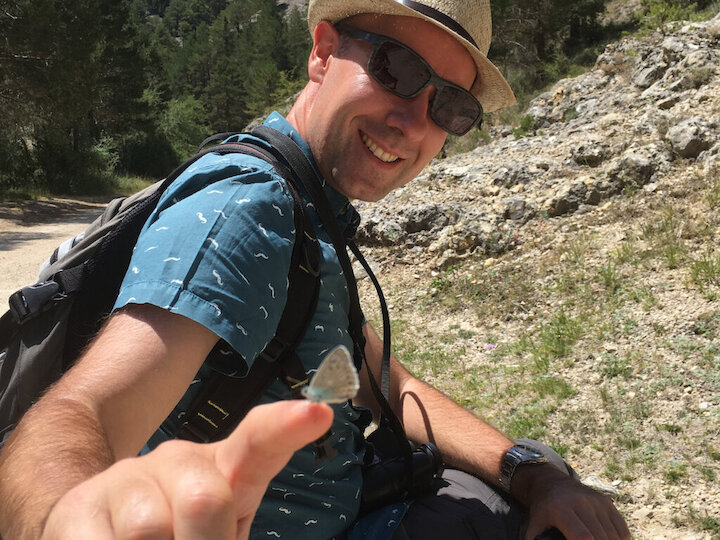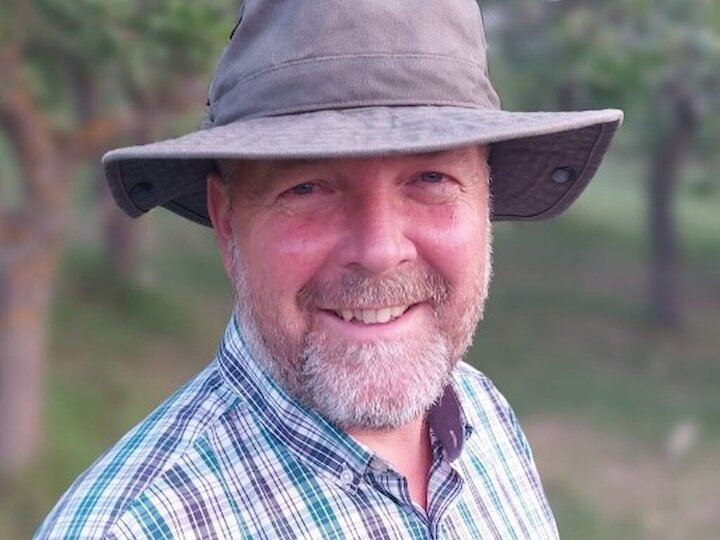Tour Itinerary
Arrival at Bilbao airport*.
Transfer to Casa Sarasa, and the rest of the day will be spent locally, a chance to familiarize ourselves with the local butterflies that we will see over the course of the week. Within walking distance, we go from the meadows in the gardens, down back lanes with fig and almond trees, along some semi-arid marl “Badlands” with interesting flora and finishing up at the riparian forest along the banks of the Veral river. We will see the three types of gatekeepers to be found here, Cleopatra and Swallowtail, as well as our first encounters with Great Banded Grayling and Marbled White, amongst others.
Berdun wider general area.
We continue our explorations of the local area, starting at a nearby chapel, set amongst Holm and Portuguese Oaks. Here we will be concentrating on hairstreaks, as we hope to find Ilex, False Ilex and Purple amongst others, as well as some blues in the grassy areas near the trees. From here we head up hill to the Fago gorge, an amazing limestone chasm where Griffon and Egyptian Vultures soar along with Alpine Swifts and Golden Eagles. Here we will continue looking for hairstreaks, Blue-spot and Spanish Purple amongst them, and we will start our contact with fritillaries, such as the Queen of Spain and Silver-washed. We continue up the gorge, stopping at a couple of meadows before arriving at another mountain chapel at 1,000m above sea level. Here the meadows are bordering some pine forests, and amongst the blues and fritillaries we will start finding some more graylings, as well as some of the many day-time flying burnet moths, such as Transparent, Merry and Algarve.
Roncal Valley in Navarre.
Here we make a couple of stops as we go up the valley, hoping to find Purple Emperor, Lesser Purple Emperor, Purple-edged Copper and Twin-spot Fritillary. Our destination however is the high La Contienda valley, near the border with France, at 1,800m above sea level. This little valley is a botanical delight, with alpine flowers nestling amongst the karst limestone outcrops, under Austrian Pines. Here we come across ringlets, including Piedmont, Champman’s and Lefebvre’s, as well as Mountain Argus and Forster’s Furry Blue, as well as enjoying the local Ring Ouzels and Crossbills.
For our fourth day, if conditions are right, we will head down to the south, crossing the outer foothills of the Pyrenees and into the Mediterranean areas around the Riglos, Aguero and Loarre ranges, dropping to 400m above sea level. Apart from the spectacular geology, we are now in an area of almond, olives and rosemary, with the hillsides covered in garrigue-like shrubs. Here we will come across Provence and Spanish Chalkhill Blues, as well as Berger’s and ordinary Clouded Yellows. Our sights are set, however, on the Strawberry Tree forests around Agüero, where we are hoping to come across the magnificent Two-tailed Pasha.
The Hecho valley beckons on the fifth day. This is a valley that stretches up to the border with France and we make various stops along the way, in meadows and alongside mountain streams. Up at the highest point we hope to make contact with Apollo, De Prunner’s Ringlet, and Escher’s, Turquoise, Iolas and Baton Blues, whilst lower down we hope to come across Large Blue, Purple Emperor and Camberwell Beauty. Our journey home includes a stop in the Binies Gorge, where a tiny meadow usually reveals a whole host of butterflies, especially fritillaries, whites and blues.
The Aisa Valley is a microcosm of the whole Pyrenees. The lower stretches of the valley are made up of tiny traditional walled grazing meadows, where we stop on a couple of occasions hoping to come across Cardinal amongst others. We proceed up to the upper part of the Valley, where after a short walk we find ourselves in a pristine mountain valley, wild flower meadows stretching away to the craggy peaks in the middle distance. The puddles and streamsides are crowded with flocks of blues garnering minerals, while Apollo, Turquoise, Silver-studded and Glandon Blues are on the radar today. A little lower down at our lunch spot we hope to come across Alcon Blue and Great Sooty Satyr, while in the fringes of the woodland we will hope to find Southern White Admiral and Mediterranean, Billowing and Six-spot Burnets.
Our final day takes us up to the frontier with France at the Portalet pass at 1,800m above sea level. Apart from Marmots, Rufous-tailed Rock Thrushes and Lammergeiers, here we make our way up towards some rocky outcrops, hoping to find more Apollos and ringlets, especially Pyrenees Brassy and Gavarnie, whilst our eyes are peeled for Gavarnie Blue. Later in the day we drop down to the Lasarra Reservoir, where a walk along the riverside on the edge of the woods takes us past little meadows with coppers, blues, hairstreaks, Camberwell Beauties and still more Apollos.
Return to Bilbao airport, and holiday concludes.
As with all of our tours, we want our guests to enjoy the very best views of the very best wildlife and, as such, we think it’s important to retain a little flexibility in the holiday itinerary. This means that we may choose to swap days around to take into account local weather conditions, or the timing of the flight or flowering season we find upon arrival at our holiday destination. Rest assured, we will ensure you visit all the best sites, and we have your best interests and comfort at heart!
*We’ll meet at the airport as this is a convenient travel hub for many. However, we appreciate that some guests may have chosen to come overland via rail, or by ferry to Bilbao. There is a regular (every 20-30 minutes) bus linking the city centre with the airport.
https://airmundo.com/en/airports/bilbao-airport/transportation/#!#public-transport





































